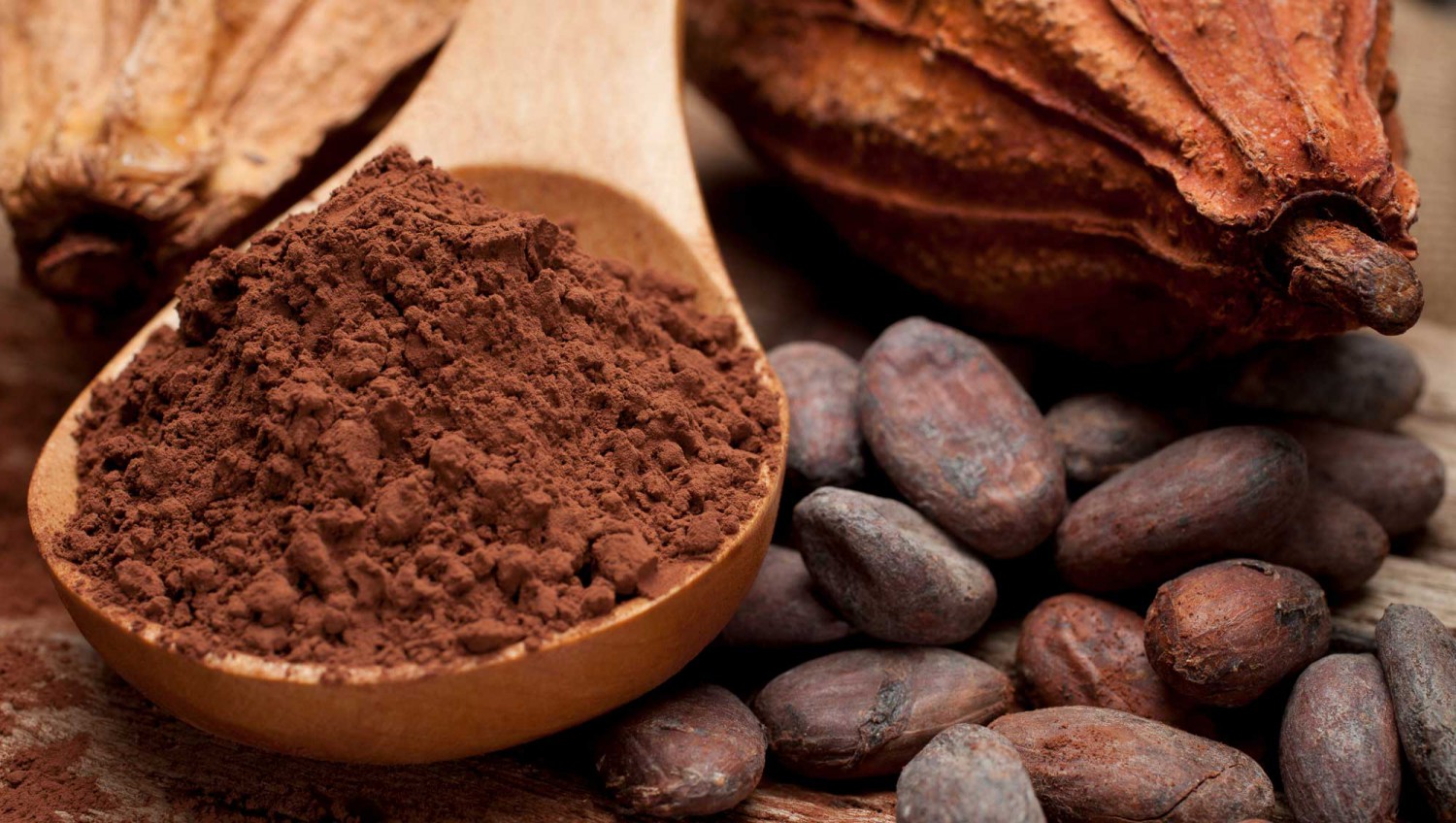After the cocoa around Easter, the month of May - quite cool and damp in Europe - was marked by some craziness in the copper market, a record for orange juice, another for gold, and a fluttering of wheat prices.
We could add antimony driven by demand from the arms industry, as well as solar panels. Each time, the same ingredients appear: weather and climate (cocoa, orange juice), geopolitics, and of course speculation fueled by increased interest from investors and funds in our beloved commodities. This last point is not new: an American hedge fund legend, Jim Simons, founder of Renaissance Technologies, who passed away at 86, did not he make his first steps as a mathematician in the seventies on soybeans and sugar! While energy markets are rather calm and reasonable (which could be misleading for natural gas), interest is focusing on metals, especially those closely or remotely related to the energy transition (especially copper), and agricultural products. Climate and wars are the main drivers. For metals, after the excitement caused by the squeeze in the New York market, copper should return to the logic of its fundamentals, probably remaining above $10,000 per ton on the LME until the end of the year, “holding back” for the following years. For other metals, the outlook remains marked by surpluses. As for precious metals, they rise in line “with the sound of the cannon”. Note that the shelving of BHP’s takeover bid for Anglo does not settle the fate of the latter, the “weakest link” among mining giants. In the agricultural domain, the main concern is Russia, with late frosts expected to further reduce wheat production. Chinese prospects, on the other hand, are good, raising the issue of grain import levels for the upcoming season. Lastly, our daily breakfast: besides orange juice, coffee, cocoa, and even sugar remain tight. One of the most famous “investor-speculators” on the planet, Frenchman Pierre Andurand, who made his fortune and reputation in oil, predicts from his fiscal exile in Malta that cocoa could reach $20,000 per ton and copper $40,000. Both were at $10,000 just a few weeks ago! One can dream.
This is an excerpt from the monthly summary published by Cercle CyclOpe. The full version, spanning 150 pages, is available by subscription. For more information, please contact us at cyclope@ampersandworld.ch
Market brief, June 2024
Energy
❚ The U.S. Energy Information Administration (EIA) estimates that oil production growth in 2023 will be only 920,000 barrels per day (bpd). U.S. production is projected to reach 13.2 million barrels per day (mbpd) in 2023 and 13.73 mbpd by 2025.
❚ The IEA has further reduced its estimate for oil demand growth in 2024 to 1.1 million barrels per day (mbpd). This creates a 1.15 mbpd difference compared to OPEC’s estimate. For 2025, the difference is slightly less pronounced: 1.2 mbpd versus 1.85 mbpd. However, supply is expected to increase by only 580,000 barrels per day (compared to a previous forecast of 770,000 barrels per day by 2025).
❚ According to PetroChina, China could surpass its liquefied natural gas (LNG) import record in 2024, reaching nearly 80 million metric tons (Mt). Currently, prices remain relatively high at over $10 per million British thermal units (MMBtu). At this price, coal remains more competitive for Chinese power generators. With heatwaves, India is also expected to increase its LNG imports by nearly 20% to 28 Mt.
❚ Indian refiner Reliance has signed a monthly contract to purchase 3 million barrels of Russian oil, to be paid in rubles to Rosneft. Reliance is expected to pay approximately $3 per barrel below Dubai prices for Urals crude and $1 below Dubai for ESPO in private deals.
❚ At its online meeting on June 2nd, OPEC+ decided not to modify its quota reduction commitments, keeping 3.06 mbpd blocked until the end of 2025. Regarding the 2.2 mbpd of “voluntary” cuts expiring at the end of June, they are extended for three months until September. OPEC+ expects member countries’ demand in the second half of 2024 to be 43.05 mbpd (with April production at 41.02 mbpd). The IEA is much less optimistic at 41.9 mbpd. The only concession was made to the UAE, which obtained a gradual increase of 300,000 bpd in their quotas. Everything else has been postponed to… 2026.
❚ Goldman Sachs now forecasts “peak oil” in 2034 at 110 million barrels per day (mbpd) (108.5 mbpd in 2030). Consumption is expected to stabilize thereafter until 2040.
❚ New oil routes are benefiting tanker demand. The current fleet averages 13 years old, with freight rates and the cost of new ships rising (though shipbuilding orders represent only 7% of the global fleet). Shipbuilders prioritize container ships and LNG carriers. Some experts estimate the need for 1,100 ships, including 400 Very Large Crude Carriers (VLCCs). For the first time, Trafigura has ordered 5 VLCCs in China, scheduled for delivery in 2026 and 2027.
❚ The closure of a Norwegian gas pipeline caused natural gas prices in Europe to surge to €38 per megawatt hour (MWh) at the Title Transfer Facility (TTF). This highlights that despite ample stocks, the European situation remains tense, especially if Russian LNG is restricted.
❚ Facing a decline in natural gas production (-11.5% in 2023), Egypt has become a net importer of LNG. It purchased four spot market cargoes in 2024 at a premium of $1.5 per MMBtu above TTF, causing tensions in the European LNG market. Egypt has chartered an FSAU that will be operational in the coming days. It is clear that Egypt’s status as a gas exporter needs to be reconsidered.
Minerals and Metals
❚ According to Johnson Matthey, platinum group metal markets are expected to remain in deficit in 2024: 598,000 ounces for platinum, 358,000 ounces for palladium, and 65,000 ounces for rhodium. The World Platinum Investment Council (WPIC) estimates a platinum deficit of 476,000 ounces in 2024. Even accounting for this deficit, stocks would still be at 3.6 million ounces, just under half of global consumption.
❚ Vale estimates Chinese iron ore imports to remain around 1,170/1,180 million metric tons, similar to 2023 levels.
❚ Rumors of a squeeze in the U.S. copper market saw prices on the New York COMEX contract reach $11,414 per tonne. This offers arbitrage opportunities, and traders like Trafigura and IXM are likely to deliver copper to New York (especially as LME stocks predominantly consist of Russian copper, which cannot be delivered to the U.S.). Concurrently, LME copper was trading at $10,240.
❚ Indonesia is increasing nickel ore imports from the Philippines: 500,000 tonnes in April, with similar figures expected in May, to offset delays in Indonesian mining permit renewals.
❚ China plans to increase its strategic cobalt reserve by 15,000 tonnes, aiming to reduce the estimated 20,000-tonne global surplus in 2024.
❚ Antimony prices surged 75% in Europe (reaching $21,000 per tonne) and 56% in China ($17,588), driven by demand from the arms industry and solar panels. China accounted for 48% of global production in 2023, with the market facing an 8,000-tonne deficit.
❚ According to Rusal’s accounts, Glencore purchased approximately $1.06 billion worth of Russian aluminum, equivalent to around 450,000 tonnes. Currently, Russian aluminum is not under sanction.
❚ Swissaid estimates that illegal gold trading from clandestine mining totals between 321 and 474 tonnes annually. In 2022, 435 tonnes allegedly left Africa, primarily through Dubai and then Switzerland.
❚ The situation in New Caledonia worsens prospects for nickel plants. With mines paralyzed, ore supply has ceased. Doniambo, the SLN plant, had barely ten days of stock remaining.
❚ Stellantis and Vale will invest in a nickel battery-grade metallurgical plant in Indonesia with Chinese partner Huayou. Ford has already invested $4.5 billion in Indonesia with Vale and Huayou.
❚ Pierre Andurand, known for his bullish predictions, suggests that copper prices could quadruple to $40,000 per tonne in the coming years!
❚ The IEA echoes similar sentiments. For copper, it estimates that existing mines and ongoing projects will only cover 70% of demand by 2030. For lithium, coverage would only be 50%. Overall, mining investments required would amount to $800 billion by 2040.
❚ The U.S. Senate has passed a bill prohibiting the import of enriched uranium from Russia. Currently, Russia supplies 25% of U.S. needs for $1 billion, with Rosatom representing 45% of global uranium enrichment capacity.
Grains
❚ Prospects for increased Brazilian soybean production continue to improve. According to CONAB, Brazil is projected to produce 147.6 million metric tons (Mt) in 2023/2024. Brazil is also expected to produce 111.6 Mt of corn, a significant decline from the previous exceptional harvest of 131.9 Mt.
❚ The sharp rise in wheat prices (+30% in April and May) surprised many buyers. Black Sea wheat for the new crop season rose from $250 to $300 per tonne. Additionally, India is expected to resume imports and remove 40% import duties. Higher wheat prices compared to corn ($2 per bushel more) will limit demand for animal feed.
❚ Ukraine exported a record 5 Mt of grains in May. For 2023/2024, exports totaled 46.4 Mt (as of May 29), compared to 44.9 Mt the previous year: 172 Mt of wheat, 26.2 Mt of corn, and 2.4 Mt of barley. In contrast, the EU exported 27.8 Mt of soft wheat by the end of May (-4%). Ukrainian production for 2024/2025 is expected to decrease to 74.6 Mt according to UGA: 19.1 Mt of wheat and 25.5 Mt of corn…
China has set ambitious goals for food self-sufficiency, aiming to increase grain self-sufficiency from 84% in 2021/2023 to 92% by 2033. This would result in a 75% reduction in corn imports (to 6.8 Mt) and a 60% reduction in wheat imports (to 4.85 Mt), with a 21% decrease in soybean imports (to 78.7 Mt). These goals contrast with USDA projections, which foresee a 39% increase in soybean imports and only a 20% decrease in wheat imports.
❚ According to IKAR, Russian wheat production in 2024 is expected to reach only 83.5 Mt, with exports totaling 45 Mt. This is due to both frost and drought.
❚ The EU has decided to tax European imports of Russian cereals and oilseeds: €95 per tonne for cereals and 50% for oilseeds. In 2023, Russia exported 4.2 Mt of grains to the EU. Belarus is also affected.
❚ The monsoon has arrived in India! Kerala recorded its onset on May 30th.
❚ Russia will declare a state of emergency following frosts in May that affected the country’s major agricultural regions, impacting major crops and fruit trees. Sovecon has lowered its wheat production forecast to 80.7 Mt from a previous estimate of 85.7 Mt. Some analysts even project a harvest of 75 Mt due to abundant rains delaying spring wheat sowing in Siberia.
❚ Australia, on the other hand, shows more promising prospects. According to ABARES, wheat production for 2024/2025 is expected to reach 29.1 Mt (+12%), barley production to 11.5 Mt (+7%), and chickpea production to double to 1.1 Mt with the potential reopening of the Indian market.
❚ Rising wheat prices impact Algerian purchases: in early May, OAIC paid $249 per tonne for 300,000 tonnes. In early June, it bought 800,000 tonnes at $279 per tonne, a $30 per tonne increase.
Tropical Agricultural Products
❚ Dreyfus estimates a sugar market surplus of 800,000 tonnes in 2024/2025 following a surplus of 2.5 Mt in 2023/2024.
❚ Egypt’s GASC bought 250,000 tonnes of raw sugar at $469 per tonne CIF. Purchases were made from Tereos, Dreyfus, Viterra, and Cofco.
❚ Ghana’s Cocobod will borrow $1.5 billion to finance the 2024/2025 cocoa campaign. Production is expected to rise to 810,000 tonnes.
❚ In New York, frozen concentrated orange juice approaches $5 per lb, double the price in May 2023. Production has collapsed in Florida, down 25%, and in Brazil, down 25% with the spread of citrus greening. Florida production is now only 17 million “boxes” compared to 240 million twenty years ago. Brazil produces 232 million boxes. In consumer countries like Japan, mandarins are starting to be used!
❚ The EU will import “only” 260,000 tonnes of Ukrainian sugar in 2024. Before the war, the quota was 20,000 tonnes. For the 2022/2023 season, imports were 420,000 tonnes and for 2023/2024, 700,000 tonnes!
❚ Pierre Andurand, the manager of a hedge fund based in Malta, renowned for his oil predictions, is bullish on cocoa prices and envisions a price of $20,000 per tonne! However, he was significantly wrong about oil in 2023.
❚ Due to favorable conditions in the European sugar market, Cristal Union announced a record beet price for the 2023 campaign at €51.42 per tonne (+18.5%).

Le Cercle CyclOpe
Its purpose is to regularly bring together (twelve times a year) stakeholders in international markets: bankers, insurers, brokers, managers, traders, producers, and consumers gather informally over lunch to exchange ideas.
Full membership in Cercle CyclOpe includes:
• Cercle meetings:
Six lunches are held in Paris, at L’Automobile Club de France.
Six lunches are held in Geneva, at Cercle de La Terrasse.
• The annual CyclOpe report (Available in both print and digital formats, in English and French);
• Access to the Cercle des Experts and the international CyclOpe network;
• Subscription to the monthly summary (Each month, a comprehensive document exceeding 150 pages, serving as a reference).
To subscribe to CyclOpe reports or events, please contact us at cyclope@ampersandworld.ch.
Find out more about Cercle Cyclope

















Social Community